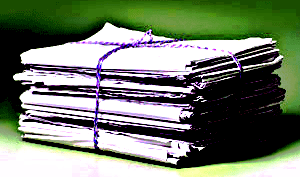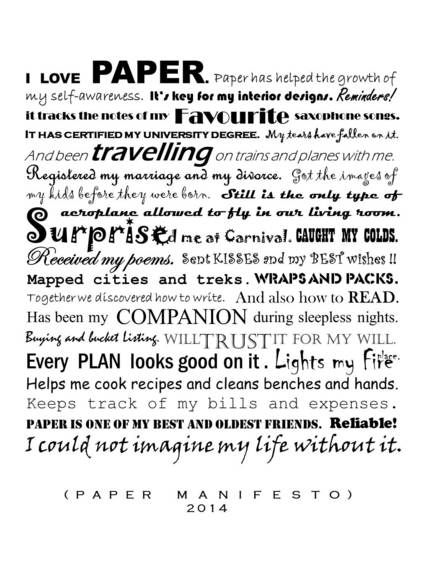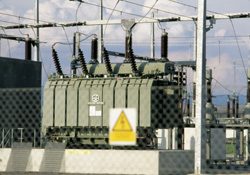Paper is sustainable. And it has a great future!
Emma does not believe in digital gadgets.
PAPERbecause has a similar plot: "Jason and the paperless office". And "Tech Support" illustrates a familiar problem.
Many more paperless videos on PAPERbecause (Domtar).
Recyclingpapier – Wer hat denn das genehmigt? from Initiative Pro Recyclingpapier on Vimeo.
(in German only)
Paper & Packaging – How Life Unfolds™
is a promotional campaign from the Paper and Packaging Board (P+PB).
IKEA promotes the Printed Catalogue — and promotes its version of "BOOK".
“Is print really dying? Not according to Ikea, which has good reason to still believe in dead trees. After all, the company prints around 200 million copies of its catalog every year in 27 languages for 38 countries. That’s more than twice the number of bibles produced in a given year.
But is a print catalog too low-fi for the high-tech age? Again, not according to Ikea, which just rolled out this amusing promo for the 2015 catalog, slyly suggesting that print is actually a wondrous technology that equals—nah, exceeds—the power of digital media.” (Tim Nudd in AdWeek)
And if you think this looks familiar, here is also the original: Book.
Update: By end of 2020, IKEA literally decided to close its books. It is ending the 70-year run of its iconic catalog, the typical 300-page catalog, which peaked at 200 million copies distributed through its stores and in the mail in 50 markets, 69 different versions, and 32 languages. (Forbes and other news)
Only in German: Wie geil ist das denn?
Henri-Nannen-Preisverleihung 2008 im Hamburger Schauspielhaus. Bühnensketch von Dietmar Jacobs zum Thema Zeitung. Heiko Seidel und Christian Ehring nebst Maike Kühl vom Düsseldorfer Kommödchen.
Produced by the German vdp:
Paper – fiction and facts
Does the paper industry destroy forests? Does the production of paper use too much energy? Answers to these and more questions.
(photo: vdp website)
Seriously, regarding carbon footprint, how dirty is your data?
And: How do you recycle your electronic newspaper?
This Greenpeace video highlights severe the contamination generated by electronic waste in Ghana.
Dateline (Australian TV) has the same story: Treatment of electronic waste in Africa, where kids do the job.
Where does e-waste end up? Another destination: India.
Power, Pollution, and the Internet
James Glanz of The New York Times and Ken Brill, an expert in the field, tour a data center and show what is required to keep it going even when power goes out.
- “Sustainable Leadership Report 2012” on the TwoSides websiteRobyn Frampton has put together some interesting research results from this report why books are better for learning than electronic readers.
. - What’s your e-impact?
If you’re fed up with being told that the internet is better for the environment, try this simple quiz.
. - Paper is sustainable. Is Digital Media Worse for the Environment Than Print?
An article by Don Carli, senior research fellow at The Institute for Sustainable Communication deals with „The Unseen Impacts of Digital Media“. Carli says, “If your goal is to save trees or do something good for the environment, the choice to go paperless may not be as green or simple as some would like you to think.” And: “Just because we cannot see something doesn’t mean that it doesn’t exist. While paper mills emit visible plumes of steam and waste paper can pile up visibly in our homes and businesses, the invisible embodied energy or ‘grey energy’ used to manufacture digital technologies and the toxic e-waste associated with electronics are largely out of sight and out of mind, but their impacts can be profound.”
. - ISC White Paper — Print vs. Digital Media: False Dilemmas and Forced Choices.
A recent study published by the ISC. A heightened sense of awareness about the environment has developed in recent years. In particular, feelings of guilt and concern are on the rise about the use of paper and its alleged impact on the fate of trees, forests and the environment. Are these feelings justified? Link to the study here.
.  5Across: Environmental Impact of Newspapers, Books, e-Waste
5Across: Environmental Impact of Newspapers, Books, e-Waste
A 23 minute video by Mark Glaser dealing with the question: „Could it be that over time newspapers are actually the greener option versus using electronic devices? No one knows for sure yet, but it’s a fascinating question to ponder.
.- Exploding the myths. The Two Sides site. In these pages you can get all the facts about the Graphic Communication Value Chain: here.
. - UPM Forest Life is an excellent interactive site that lets students explore a forest virtually: www.upmforestlife.com
. - The European paper and packaging industry has updated ‚The Story behind Paper‘ brochure in 2009. The electronic file can be downloaded from the CEPI website here.
. - EU Ecolabel for Printed Products launched: Official Website
More to come.
If you have any questions, do not hesitate to contact us!



